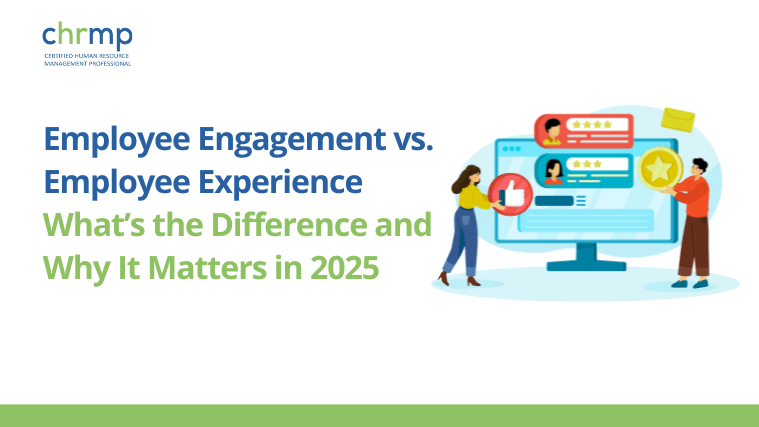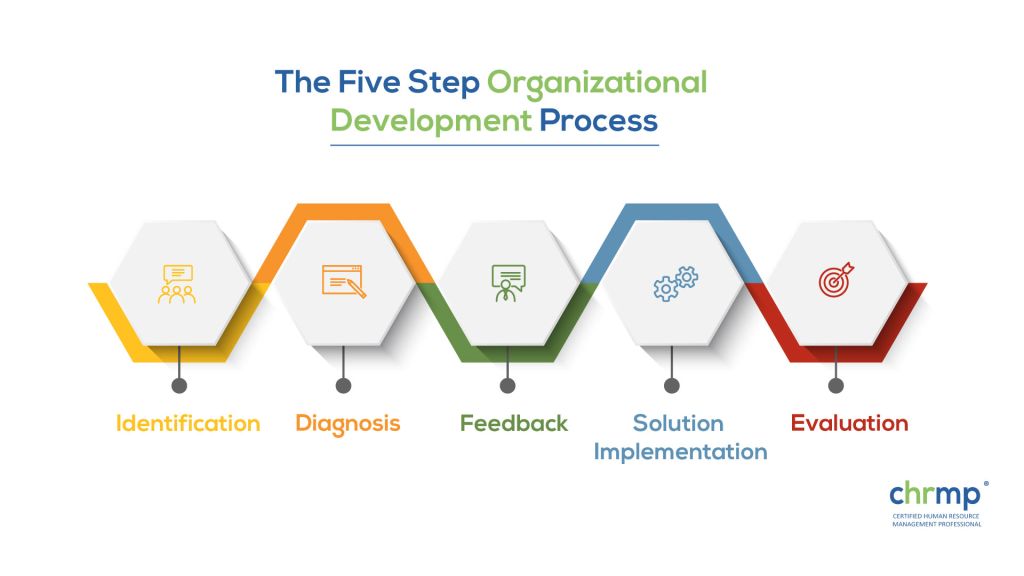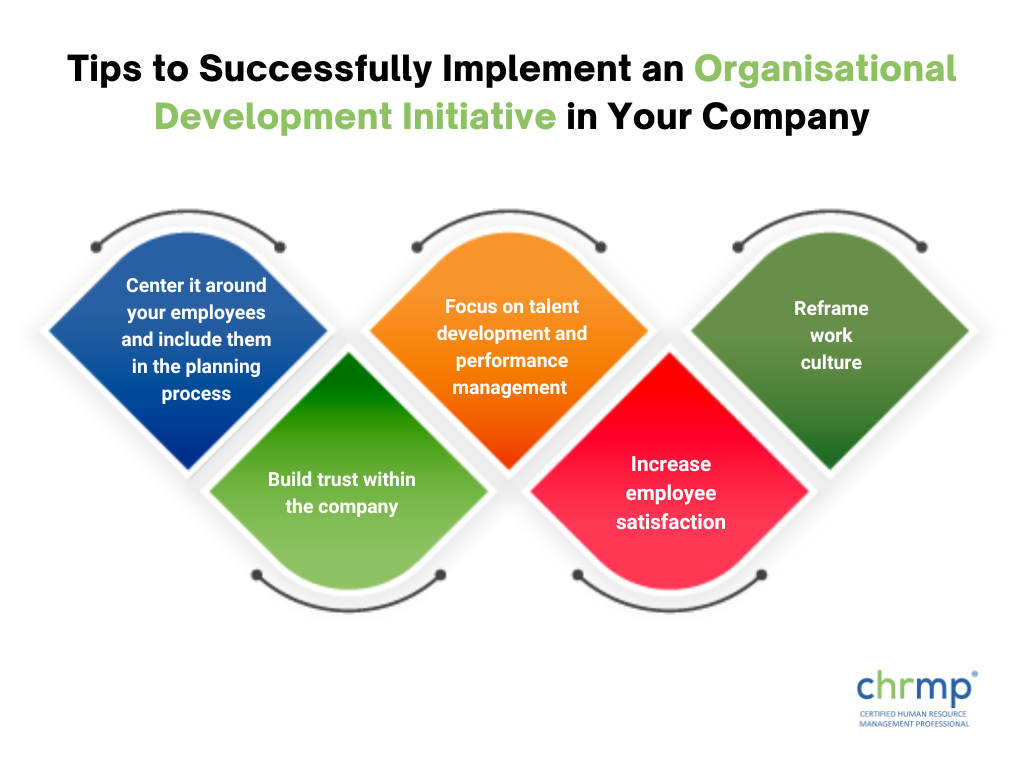

Organisations undergo regular changes in today’s VUCA (volatile, uncertain, complex and ambiguous) world, paving the way for Organizational Development.
Change is never easy, be it a large-scale, multifaceted business or a small organisation just starting to grow. But change is essential to an organisation’s growth and success, no matter how complicated the process might seem.
You have probably heard of organisational development, but what does it mean?
In this guide, we shall peek into the definition, goals, process and tips to improve your organisational development process to increase the efficiency of your organisation.
So without further ado, let’s dive into everything you need to know about organisational development.
In a nutshell, Organizational Development (OD) is a critical science-based process of implementing changes through systems and techniques to improve the functioning capacity of an organisation.
Richard Beckhard, a renowned organisational theorist, states, “Organisational development is an effort planned, organisation-wide, and managed from the top, to increase organisational effectiveness and health through planned interventions in the organisation’s ‘processes,’ using behavioural-science knowledge.”
Simply put, Organizational Development is a strategy adopted by organisations to increase their efficiency and effectiveness to achieve the desired results.
A large-scale, organisation-wide change is never easy. It is rarely possible without employee resistance, which is why the organisational development process is dynamic and constantly evolving to adopt more effective strategies to implement changes smoothly.
Organisational Development is essential because it is directly linked to the success of your organisation. OD affects every aspect of decision-making in the company and changes how it works for the better.
A well-structured and properly-implemented process of organisational development will improve workplace productivity while empowering your employees.
Whether it’s employee growth, company profits, or enhancing your company’s products and services, organisational development brings many positive changes to every department.

Organisational development and human resources are closely linked through a common goal, i.e., improving the company’s efficiency. Thus, to achieve the best results, the OD and HR departments need to cooperate and work together.
The organisational development department of a company works for the overall development of the company.
The OD department helps an organisation adjust to new environments, the pressure of competition, and rapidly advancing technological changes.
The main objective of the OD department is to implement changes to enhance the skills of individual teams.
The OD department constantly develops new strategies to reform the company’s existing human resource management systems. Organisational development in the HR department entails changes and improvements to the processes and structures that fall under the purview of HR. Some examples include performance management, talent management, diversity, employee wellness, and other functions and systems.
In contrast, the HR department is more people-centric and seeks to develop individual employees that work in the company.
One of the most common grounds where the OD and HR departments correlate is the development and implementation of Human Resource Management Systems.
Sometimes, OD functions are housed within the HR function, but not always. It is sometimes associated with a services department, corporate strategy, or internal consulting. OD techniques are also frequently used in management projects through external strategy consultants.
The goal of organisation development often depends on the organisation’s dynamics. The OD department’s foremost goal is to use the available resources to improve the company’s overall efficiency through problem-solving strategies and developing methods to analyse the processes involved.
Here are some of the goals that the OD department works to achieve:
The organisational development process is centred around developing strategies to increase productivity and the efficiency of the entire workforce. The organisational development process provides employees relevant skills to help the company succeed in ever-changing markets.
Organisational development strategies also improve communication within the workforce, which helps align employees with the company’s vision. The process of OD brings about an increase in motivation, thus empowering employees and encouraging them to put their best foot forward.
The OD process guides employees along the way to help achieve organisational goals.
One of the most important goals of the process of OD is to enhance the employees’ problem-solving skills. When employees successfully solve tricky problems, they polish their skills which later helps to boost workplace productivity by improving their performance.
The organisational development process encourages employees to participate in planning strategies related to their skillset, which creates a sense of responsibility in employees while encouraging them to give their best performance.
Including employees in the planning process gives them a much clearer picture of the company’s goal, making achieving it more effortless.
Another important goal of the organisational development process is to develop effective communication channels between employees and managers.

An efficient communication system within the company develops a cooperative relationship between employees and managers.
A lack of proper communication may result in a communication gap in the company, which can develop into a barrier that stands in the way of the company’s success.
Providing a non-judgemental and friendly working environment is essential to increase employee productivity. The organisational development process aims to create a stress-free, friendly environment for employees to work comfortably.
A stress-free work environment helps employees grow and thrive professionally, which in turn has a positive impact on the profit levels of the company.

The organisational development process is complex and continuous, consisting of several steps influenced by research and evidence. OD professionals implement the strategy in a five-step structured process
Before making changes to the company’s existing policies, you must identify the underlying issues with them and find out what exactly the company needs to achieve the desired business goals.
Ask questions like ‘What changes does the company need?’ and ‘Why is it so important to make these changes?’ The answer to these kinds of questions will help you identify and isolate all the different areas that need improvement.
If you still don’t have a crystal clear picture of your company’s needs, you can conduct surveys and gather employee feedback to identify issues using a more data-driven approach.
A data-driven approach will help you gain a more profound understanding of the areas that need urgent improvement.
Once you have identified the areas in the company that need improvement, the next step is to investigate why the issues exist in the first place.
This step usually involves investigating the problems through a collaborative data-gathering process with the company’s stakeholders and discussing the root cause of problems, previously implemented solutions, and what caused a hindrance to improvement efforts.
Once you have gathered all the data regarding the issue and what’s causing it, get feedback from all parties involved in the process to come up with the most suitable solution.
The feedback phase also includes a review of the preliminary project scope and resource agreements, which usually ends with creating an action plan that outlines the progressive change solutions while defining success factors based on the information and data analysis.
Once you have created the perfect action plan your organisation needs, you must share the plan’s vision and motivate employees to step up and work together to achieve the goal.
Encourage the top-level leaders of your company to act as role models and help the employees achieve the desired outcome of the organisational development process.
Guide and mentor the company’s employees and provide training per the requirements of your action plan to implement the solution and achieve the desired outcome.
Once you have successfully implemented the plan and the change process is set in motion, evaluate whether the strategy has successfully eliminated the problem. Get feedback from employees and managers if the plan worked.
In case of a change failure, identify the cause and adjust the plan to eliminate the hindrance depending on the evaluation results.
Given the complex nature of organisational development procedures, Organizational Development interventions are equally intricate.
OD practitioners determine the type of intervention required based on their analysis of the organisation’s current situation and the problem that needs resolving.
While a few interventions may work for various organisations, combining interventions will always have a greater chance of producing positive results.
According to the research of organisational experts Cummings and Worley (2009), it is not possible to identify every kind of intervention. However, organisational development interventions can be broadly classified into four categories:
Human process interventions are based on human relations principles and aim to work on interpersonal relations within the organisation at the individual, group, and organisational levels.
Human process interventions’ main aim is to improve areas like team building, conflict management, inter-group relations, etc.
Human process interventions are housed within interpersonal and group process approaches. These interventions define the relationship between individuals and groups within an organisation.
With the implementation of human process interventions, members of the organisation will better understand each other, which will aid in achieving a more well-rounded, effective and efficient result.
Techno-structural interventions mainly aim to rejuvenate an organisation’s structure and processes with a focus on technological resources.
Techno-structural intervention activities intend to improve the effectiveness of organisational structure, workplace hierarchy, job designs and system changes. Experimenting with new organisational structures and evaluating their effectiveness in terms of specific goals are examples of activities related to techno-structural interventions.
These types of interventions focus on building an organisation’s competitive advantage by helping critical policymakers of the company implement changes to the existing structures and processes.
Strategic Change interventions may include transformational changes like a thorough reshaping of the organisation’s business strategy through processes such as outsourcing, restructuring the organisation’s departments or reinforcing the top management level with more competent employees.
Strategic change interventions are especially effective when an organisation undergoes functional changes, such as replacing core products or services with new and better ones, or trans-organisational modifications, such as mergers or acquisitions.
Human resource management interventions or HRM interventions aim to increase an organisation’s functions by focusing on integration, development and providing support to individual employees within the company.
Companies use the types mentioned earlier of Organizational Development interventions in many ways to keep up with the present pace of change to stay relevant and achieve success.

Now that you’re familiar with organisational development and its types, processes and advantages, it must be clear that investing in an organisational development initiative will significantly benefit your company on its path to success.
With the help of a robust organisational development initiative, your company can gain an edge over other organisations in today’s highly competitive industrial landscape.
But a lack of solid understanding of implementing an OD initiative in your company can be a disaster.
To help you successfully implement an organisational development initiative for the growth of your company, here are five tips that will prove immensely helpful:
Back in the day, only the leaders and managers from the company’s top management level would hold exclusive boardroom meetings and make plans and decisions that would affect employees company-wide.
Once they were done with the process, everybody was expected to follow suit without having a say. Now, it is a no-brainer that this process is not the best way to go about it.
Thankfully, present-day companies have come a long way and prioritised inclusivity.
With every passing day, the process of organisational development presents new challenges. But to successfully implement an organisation-wide development initiative, one of the most critical aspects that companies must overcome is focusing on making the process inclusive and employee-centric.
Involving your employees throughout the planning process gives them a say in the company’s policies, making it easier for them to adapt to the changes. Including employees in the process makes them feel more engaged and willing to go along with the plan, even if they do not fully support it.
The objective is to provide employees with the tools they need to do their jobs effectively, including essential decision-making abilities.
Building trust between managers and employees is vital to getting employees on board with significant changes in the company without creating chaos.
Employees that fully trust the organisation they work with are more likely to embrace strategic shifts in the company’s policies and willingly work hard to achieve the goal.
Mutual trust and respect are among the foundational pillars of successful companies.
A solid organisational development initiative should focus on making changes to improve talent development and performance management strategies to boost the company’s growth.
Focusing on improving strategies to boost workplace productivity and the performance of employees is an essential aspect of organisational development.
Increasing levels of employee satisfaction can create a positive impact on workplace productivity and significantly reduce turnover rates.
With constantly developing organisational policies, employee satisfaction often takes the backseat. But it is essential to keep working to maintain and increase employee satisfaction.

Satisfied employees play a crucial role in implementing developmental changes in the company. Taking small steps to enhance employees’ experience, recognising their contributions and maintaining a healthy work environment can go a long way in building a happy, satisfied workforce.
To ensure the success of your organisational development initiative, you must implement it at the core of your organisation and focus on reframing work culture.
Development does not always mean modernising or upgrading existing systems. Development processes sometimes entail changing the company’s human principles and values.
To reframe your company’s work culture, you need to focus on areas such as diversity and inclusion in the workplace, creating a safe, healthy working environment that values employee wellness, creating a culture of appreciation and promoting healthy leadership practices.
Researchers and experts in organisational development have laid out several organisational development models to help OD practitioners create and implement a successful plan of action for their organisational development initiative.
Models create a clear framework to help organisations with change logistics that are tried and tested by several companies. Here are four popular Organizational Development models:
Kurt Lewin’s organisational development model, presented in 1947, is an easy-to-understand three-stage framework that several organisations have successfully implemented.
The three stages of Kurt Lewin’s organisational development model are:
The Unfreeze stage entails ensuring change readiness by preparing the organisation to understand and accept the importance of the need for change.
Companies at this stage work to loosen current norms and procedures to prepare for the eventual changes.
This stage includes identifying what needs to change and why and gathering support from key people in the company to work on creating a plan of action for organisational development.
This stage also addresses any uncertainties or reservations that the employees might have by consistently showing the reasons for the discontinuation of existing business practices to help the employees accept the need for change.
Leaders may need to manage the organisational culture’s current state of equilibrium by balancing opposing forces, i.e., different factors that drive or resist change, with the help of a thorough evaluation of the pros and cons of change. If the forces favouring change outnumber those opposing it, change will occur; otherwise, the change plan may fail.
The second step in Levin’s three-stage organisational development process deals with implementing the changes after the company and its employees are free from the existing functioning process of the organisation.
This stage often proves to be difficult, as adapting and adjusting to the new processes creates a feeling of uncertainty in employees.
To manage the chaos and help employees smoothly transition to the latest functioning process, you must allow them ample time to grasp the changes and get used to them.
Make sure to address all queries and encourage feedback from the employees.
Communication is vital during the transition stage. Maintain a continuous flow of information with everyone, and address all questions articulately to make the transition phase as smooth as possible.
You could also organise workshops on change management and regular sessions to practice change management exercises.
The final stage in Lewin’s organisational development model is characterised by reinforcing and institutionalising the new changes once your employees get used to them and all company processes run accordingly.
Implementing the Freeze stage will create a sense of stability in employees as they embrace the new changes in the company.
You must embed the changes into the company’s work culture to ensure that people don’t revert to previous behaviours. Create strategies to sustain the new model, support your employees at every step, and celebrate their wins each day, no matter how small.

The Action Research Model (ARM) is another organisational development model curated by Kurt Lewin in the 1930s.
The Action Research Model suggests that leaders and employees collaborate and cooperate to improve their relationships and communication.
According to Lewin, the best way to achieve desired change is for the researcher (OD Professional) and the client (Senior Leaders) to collaborate, identify problems, and implement solutions.
The ARM process consists of three steps:
The first step in the ARM process focuses on conducting research to identify problem areas and theorise solutions. Data collection, focus groups, and hiring an outside consultant or specialist are all part of the research phase. The ultimate goal in this phase is to identify problem areas and develop a workable, result-oriented solution.
Similar to the three-stage model that we discussed previously, the second phase of the ARM organisational development process deals with implementing the desired changes. This phase requires a precise, effective communication method to ensure a continuous flow of information, along with support and guidance from leaders for the employees.
The final stage of the Action Research Model of organisational development involves collecting data to analyse the impact of the development strategy on the organisation. The input and results phase is characterised by analysing and reflecting on the new changes and going back a few steps to rectify in case of a negative result.
1. What is organizational development (OD)?
A: Organizational development (OD) is a systematic approach to improving and transforming organizations through planned interventions and strategies. It focuses on enhancing organizational effectiveness, employee engagement, and overall performance by analyzing and addressing various aspects such as leadership, culture, structure, and processes.
2. Why is organizational development important for businesses?
A: Organizational development is crucial for businesses as it helps them adapt to changing environments, improve productivity, foster innovation, and build a strong organizational culture. It facilitates better communication, collaboration, and employee engagement, resulting in higher employee satisfaction and retention. Ultimately, OD enhances an organization’s ability to achieve its goals and stay competitive in a dynamic marketplace.
3. What are the key steps involved in the organizational development process?
A: The organizational development process typically involves the following steps:
4. How can organizational development initiatives support change management efforts?
A: Organizational development and change management go hand in hand. OD initiatives provide frameworks and tools that support successful change implementation. By involving employees and stakeholders in the change process, OD helps create a shared vision, build buy-in, and manage resistance. It also assists in developing the necessary skills and capabilities for employees to adapt to new ways of working, thereby increasing the likelihood of successful change outcomes.
5. What role does leadership play in organizational development? A: Leadership is a critical factor in organizational development. Effective leaders drive change, create a positive organizational culture, and inspire employees to perform at their best. They provide the vision and direction for OD initiatives, establish clear goals, and empower employees to contribute their ideas and talents. Strong leadership fosters trust, encourages collaboration, and ensures the commitment and engagement of the workforce, leading to successful organizational development efforts
In conclusion, organisational development is a crucial aspect of business that shapes the growth and success of organisations. The process of OD is complex, with several different stages and methods to implement change.
With a clear understanding of the process, organisations can successfully implement positive changes to help the company make their mark in today’s competitive industrial world.
CHRMP (Certified Human Resource Management Professional) continuously strives to expand valuable knowledge of the HR field through its world-class certification courses.
Are you looking to enhance your HR skillset and step into the world of top-level HR professionals? Join CHRMP and achieve new heights in your HR career.
Enrol with CHRMP and get a certification course today!
© 2007-2025 CHRMP| All Rights Reserved | Powered by Ripples Learning & Research Private Limited
